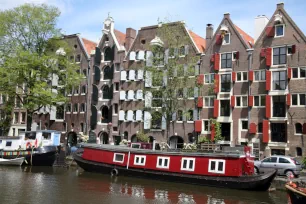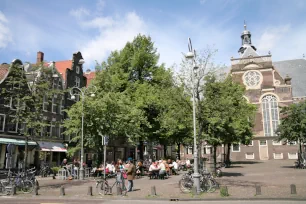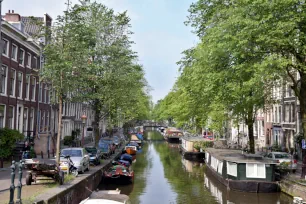Formerly a working-class quarter of Amsterdam, home to a large population of the city’s immigrants, Jordaan has become one of Amsterdam’s hippest places to live and work.



Visitors to the city now flock to this area, which was once infamous for its tiny houses, open sewers, and less-than-pristine living conditions.
History of Jordaan
When Amsterdam was expanded in the seventeenth century, the area known as Jordaan was added to house the city’s growing poor, immigrant population. By all accounts, it wasn’t a very pleasant place to live. Canals served as both transportation and sewers, and there was no running water. Flemish, Spanish, Portuguese, Jews, and French Huguenots all called Jordaan home and the area was seriously overcrowded, with about 80,000 residents crammed into a relatively small area by the year 1900.
Yet great names in the arts and literature chose Jordaan as their home, thanks to attractive low rents. People like Dutch writer Joost van den Vondel and famous artist Rembrandt settled here. As a matter of fact, Rembrandt is buried here in a pauper’s grave at the local Westerkerk (West Church).
In the 1970s, developers hoped to demolish a large portion of the Jordaan neighborhood, but concerned citizens fought to maintain the historic area. Since that time, Jordaan has become one of Amsterdam’s most desired districts, attracting aspiring artists, musicians, and writers.

What to See
If you’re heading to Amsterdam, a walking tour of Jordaan is a must-do. There’s so much to see here that reflects the rich history of the area. A stroll through the narrow streets takes you past picturesque canals, art galleries, courtyards, historic homes boasting stone tablets that attest to the inhabitant’s occupation, pubs, boutiques, and small markets.
Visit the Noorderkerk (North Church), the main church in the area, built between 1620 and 1623 at the Noordermarkt, a typical village-square. The church is still an active Protestant congregation, and local musicians present concerts there year-round.
The so-called “courtyards” that are popular in Jordaan are actually inner yards containing little houses, built by wealthy residents for older widows as a sign of charity. Some are open to the public, while others are occupied by “starving artists”.
You’ll also find a few small museums in the Jordaan, including a Pianola Museum of mechanical pianos, a houseboat museum, a literary museum, and a quirky “fluorescent” museum called Electric Lady Land.

